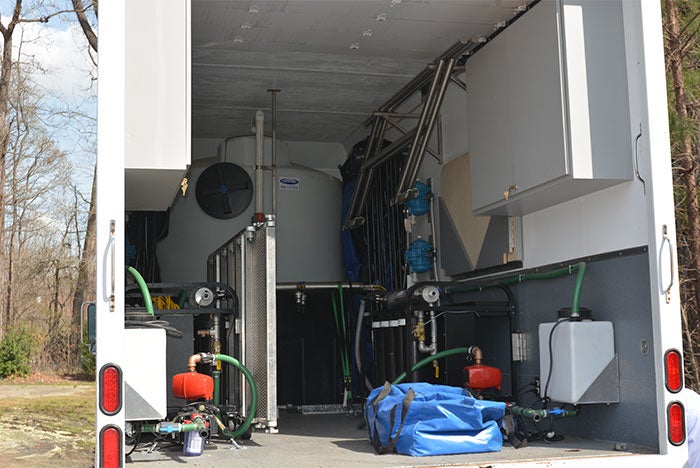Duke University Hospital transforms truck into emergency water-filtration system

Duke University Hospital used state and federal funds to bring its vision for an emergency water filtration truck to life.
The disaster response team at Duke University Hospital recently retrofitted a piece of equipment that will ensure it has drinkable water in emergency situations. According to Duke Today, the hospital transformed a 27-foot Ford-F-650 truck and trailer into an emergency mobile water filtration system that can pump out 2,400 gallons of potable water every hour.
Duke University Hospital envisioned the water filtration truck five years ago and was able to secure $140,000 from state and federal grants to make its vision come alive. The truck holds two separate water filtration systems lining each side of the truck’s rear. It also holds a 1,200-gallon storage tank, fold-out holding tanks, a portable dispensing station and snap-on stairs. Generators, hoses, extra filters along with plastic bags each specially designed to carry a gallon of water also are stored in the truck.
All the system needs is a water source, such as the reclamation pond on the university’s west campus. The university says that although it may not look as impressive as other vehicles within its fleet, such as the big rig that can transform into a field hospital, or its modified ambulance that can pull resupply trailers, the water filtration system will be an integral part of its Disaster Medical Response Program (DMRP). It was built to be deployed with the field medical hospital and to support medical facilities in the North Carolina region.
The DMRP, now in its seventh year, is funded through a grant administered by the North Carolina Office of Emergency Medical Services and funded by the Department of Health & Human Services Assistant Secretary for Preparedness and Response. Additional grants come from the Centers for Disease Control and Prevention and the Department of Homeland Security. The group says that its mission is “to assist our regional partners and stakeholders in planning and mitigating for, responding to and recovering from all-hazards disaster events.”




